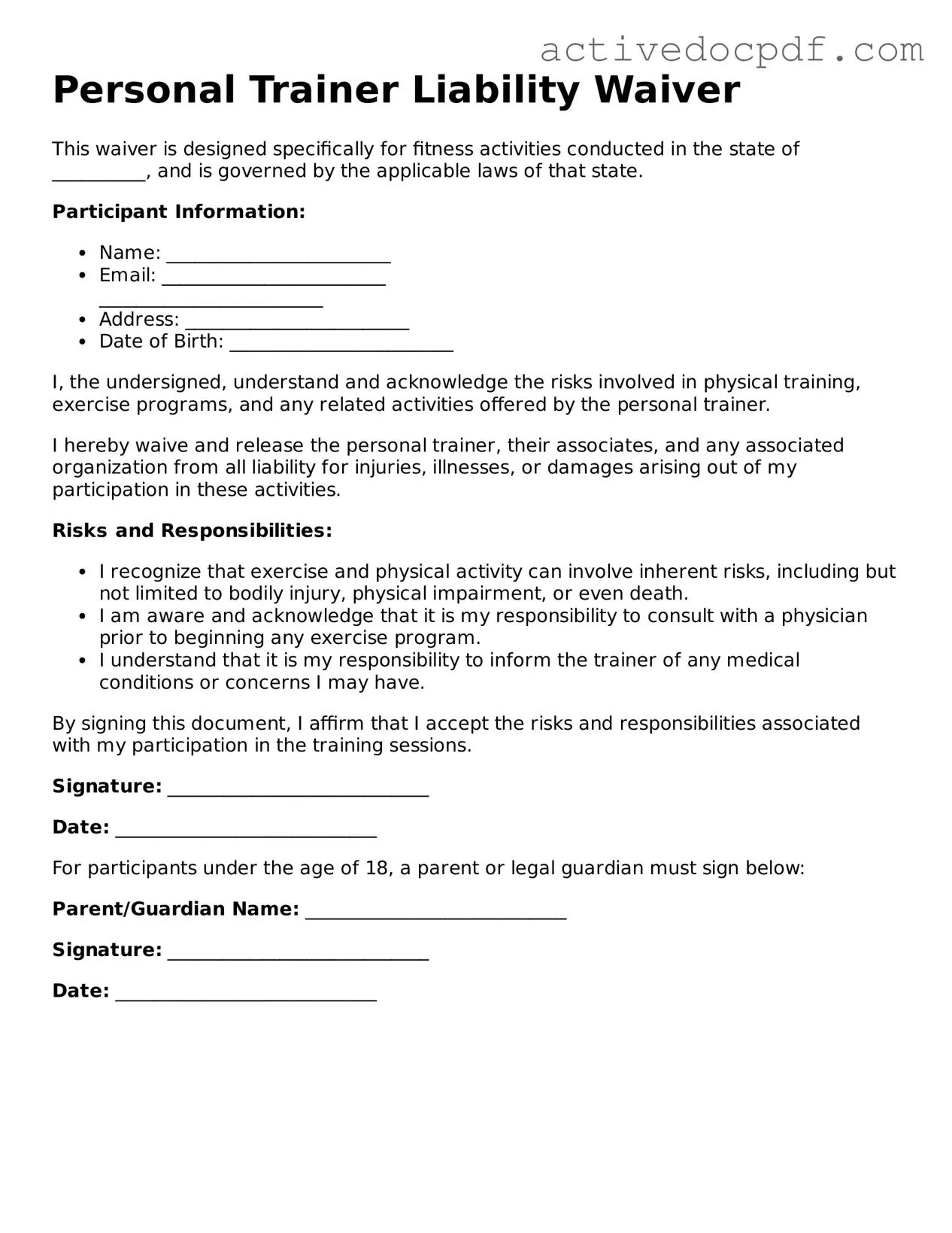Legal Personal Trainer Liability Waiver Template
A Personal Trainer Liability Waiver form is a document that protects fitness professionals from legal claims related to injuries sustained by clients during training sessions. By signing this form, clients acknowledge the inherent risks associated with physical activities and agree not to hold the trainer liable for any accidents. Understanding this waiver is essential for both trainers and clients to ensure a clear agreement on responsibilities and risks involved in personal training.
Edit Form Online
